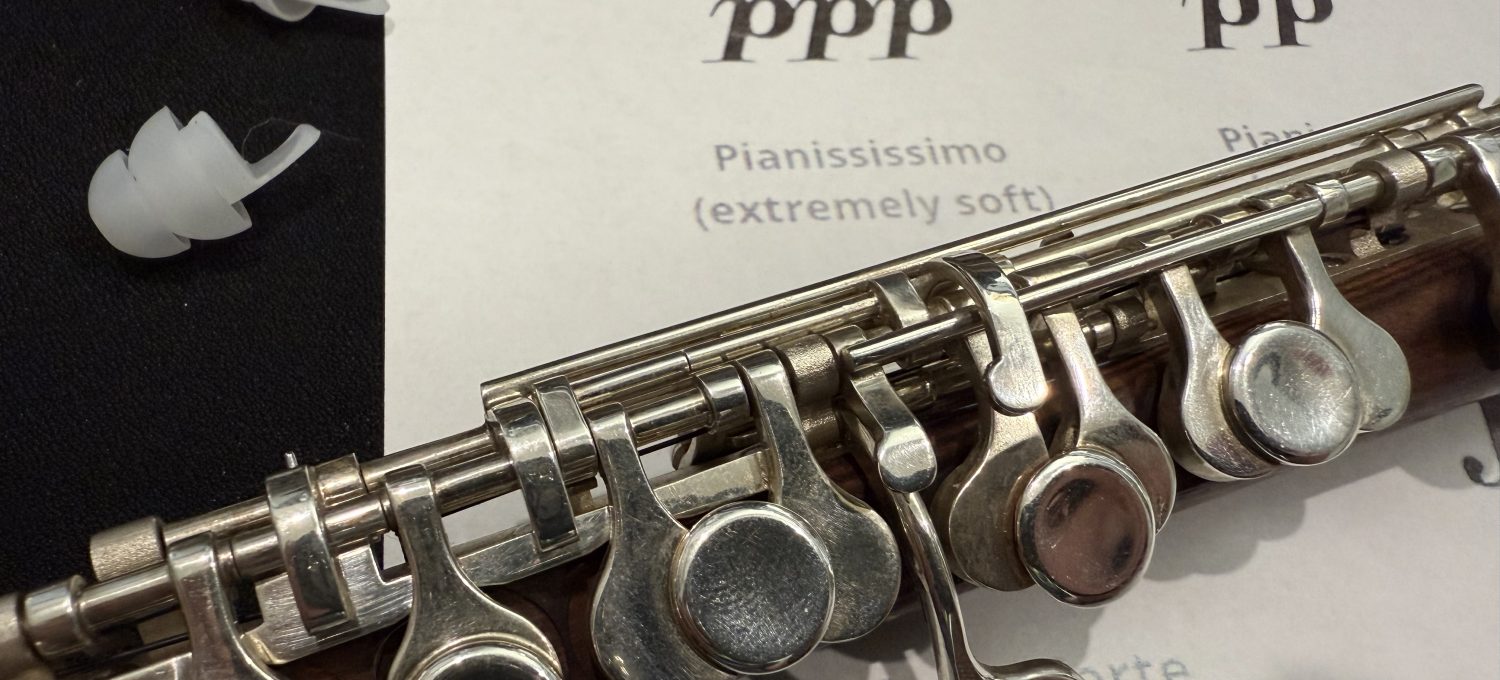Playing softly AND playing in tune on the piccolo go hand in hand. One important thing to remember is that the wooden piccolo is conical, not cylindrical like the flute. So it will have different pitch tendencies than the flute. It is important to become familiar with your instrument’s pitch tendencies because each instrument will be slightly different. Another important factor is that because of the piccolo’s size, any embouchure or air direction change will also need to be relative to the size of the instrument. In other words, any adjustment you make will need to be much smaller than the adjustment you would use on the flute. You will also want to strive to play without tension. Yes, the embouchure is a little smaller because of the smaller aperture on the head joint, but if you play with tension it will affect both the tone and the overall pitch. One should always strive for a beautiful sound first, then see what pitch adjustment needs to be made.
So what happens if you’ve adjusted your embouchure for soft playing and are not tightening up and you still can’t play soft enough in tune? This is where the alternate fingerings that I spoke about in my last article are of great use. It’s is very useful to experiment with different fingerings and find the ones that are both best for your instrument and for the literature you’re performing. For instance, you might use a different soft fingering when performing a solo than you would with an orchestra or wind ensemble. You may also need to use a different fingering when playing with a clarinet as opposed to a trumpet. Sometimes playing softly in a wind ensemble is harder than doing so in an orchestra. In the wind ensemble you’re right in front of the conductor so you will sound louder to them and perhaps out of balance with the group. In this case it’s best to have someone determine balance from the hall. Another thing you can do that may help is to angle the end of the piccolo farther out in front of your body—be sure you don’t change the tone if you try this.
It’s important to always strive for the best blend of sound, not only when playing softly, but at all dynamic levels. Beautiful sound, blend and then intonation, in that order, is what makes a strong player. A good rule of thumb to use is if the conductor tells you you’re sharp, interpret that as being too loud and not blending—adjust there first. If the conductor tells you you’re flat, you’re probably out of tune (it could be either way, the frequencies on the piccolo can make it harder to determine in some instances). If this is the case, adjust your pitch, but not at the expense of your sound. BEAUTIFUL SOUND IS ALWAYS FIRST!

